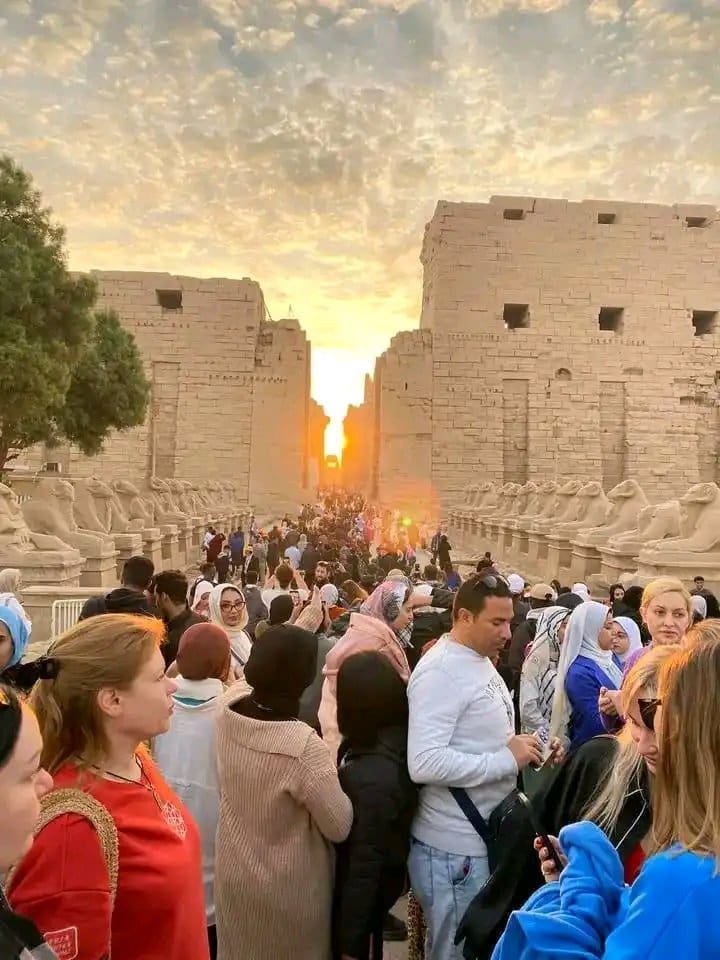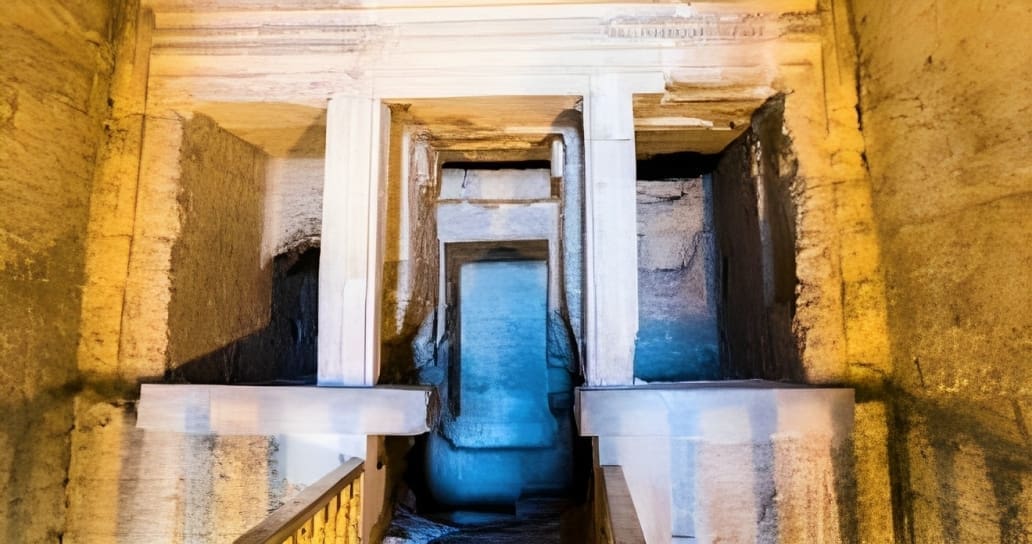Egypt’s Ancient Solar Alignment: An Architectural and Astronomical Marvel Revisited Annually
Egypt, a land steeped in ancient mysteries and architectural wonders, witnesses an awe-inspiring astronomical event each year, rooted deeply in its Pharaonic legacy. This phenomenon, observed at the Karnak Temple in Luxor and the Qasr Qarun Temple in Fayoum, marks the winter solstice’s onset with the sun’s alignment over the sanctuaries’ innermost chambers.

Karnak Temples witness the phenomenon of the sun perpendicular to the main axis of the Temple of Amun Ra-Source: X
Karnak Temple, Luxor:
In Luxor, locals and tourists alike gather annually on December 21st to witness the sun’s rays illuminating the inner sanctum of the Karnak Temple.
بدء تعامد الشمس على قدس الاقداس بالكرنك pic.twitter.com/RwnA8afxTR
— AZZa EZZat (@AZZaEZZat16) December 21, 2023
This architectural marvel, aligning with the sun at the winter solstice, not only signifies the season’s change but also stands as a testament to the ancient Egyptians’ advanced understanding of astronomy and architecture. The event, marking the shortest day and longest night, signifies the sun at its lowest zenith, heralding the winter season in the Northern Hemisphere.

Qasr Qarun Temple, Fayoum:
Similarly, in Fayoum, the Qasr Qarun Temple, dating back to the Greco-Roman period, experiences this unique solar alignment. Discovered in 2003, this phenomenon lasts about 25 minutes and occurs on the same day as in Karnak. The temple, originally serving as a granary, is a complex structure with around a hundred rooms, mazes, and corridors. The solar alignment here is not just a captivating sight but also a reminder of Egypt’s rich and enduring legacy in linking architecture with celestial events.

Significance in Agriculture and Astronomy:
Experts believe these events are more than mere coincidences. They emphasize the Pharaohs’ profound understanding of the sun’s apparent motion and its impact on agricultural cycles. Temples in Egypt were constructed not only for religious purposes but also to mark significant astronomical occurrences. These alignments served as indicators for farmers to determine crop types, intertwining celestial events with the practical aspects of daily life.
| Location | Temple | Date of Event | Astronomical Significance | Architectural Features | Historical Era |
|---|---|---|---|---|---|
| Luxor | Karnak Temple | December 21 | Winter Solstice, Shortest Day & Longest Night | Inner Sanctum illuminated by Sun | Ancient Egyptian |
| Fayoum | Qasr Qarun Temple | December 21 | Winter Solstice, Solar Alignment | Greco-Roman Granary design, Labyrinths | Greco-Roman |
This annual celestial spectacle not only draws attention to Egypt’s ancient architectural prowess but also underscores the deep astronomical knowledge possessed by its ancestors. It continues to fascinate both the scientific community and the general public, bridging the gap between the ancient and modern worlds.

